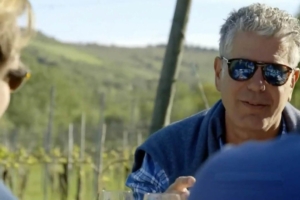Crescentine in Bologna: origins, recipe & top spots

In Bologna, few things pair as perfectly with a platter of cold cuts and cheeses as a basket of freshly fried crescentine.
Crispy on the outside, and pillowy soft on the inside, these golden squares of dough are a beloved staple of the city’s culinary scene.
While you may hear them called different names—gnocco fritto in Modena or torta fritta in Parma—Bologna’s fried crescentine holds its own in Emilia-Romagna’s rich food tradition.
Let me take you on a journey through history, the best places to eat them, and even how you can make this delicious treat at home.
What Is Crescentine?
In Bologna, crescentine refers to squares or rectangles of leavened dough that are deep-fried and served either filled or accompanied by a selection of cured meats and cheeses.
The name crescentina comes from the idea of “growing” (crescere in Italian) or rising dough, originally made from leftover bread dough.
Interestingly, the term “crescentine” takes on a different meaning in nearby areas.
In the Apennines of Modena, for example, the name "crescentine" is given to what we in Bologna call tigelle—small, round-leavened bread cooked in a special press.
As for Modena, they refer to Bologna’s fried crescentine as gnocco fritto.
Confused yet?
Don’t worry—whether you’re enjoying crescentine in Bologna or gnocco fritto in Modena, you’re in for a tasty treat.

Crescentine, Gnocco Fritto, and Torta Fritta: Different Names, Same History
Crescentine is rooted in Emilia-Romagna’s rich food traditions.
Where the Lombards once settled, particularly in Emilia, animal fat and pork dominated the cooking methods, with fried dough as a staple.
However, terracotta slabs called testo are used to grill bread instead of frying it in the neighboring region of Romagna.
One legend claims that crescentine was born when a group of revolutionaries, meeting in secret at inns along the Via Emilia, had to hide their lard during a police raid.
They threw it into a pot near the fire, and to escape suspicion, they claimed it was used to fry bread. Stretching dough into the hot lard, they unknowingly created crescentine.
Despite this playful tale, crescentine has humble origins as “poor man’s bread.”
Made with simple ingredients—flour, water, yeast, and lard—these fried breads vary by region.
Curious to know how it's made?

The Recipe of Crescentine
Want to try making fried crescentine at home?
It’s easier than you think!
Here’s a simple recipe that mirrors the ones you have during our Modena food tour:
Ingredients:
- 500g flour
- 50g lard (or butter, for a lighter version)
- 15g yeast
- 200ml warm water
- A pinch of salt
- Olive oil or lard for frying
Instructions:
- In a bowl, dissolve the yeast in warm water. Add the flour, lard, and salt, and knead the mixture until you have a smooth dough.
- Let the dough rise for about an hour until it has doubled in size.
- Roll out the dough on a floured surface to about ½ cm thick and cut it into small squares or rectangles.
- Heat the oil or lard in a deep frying pan. Fry the dough pieces until golden and puffed, turning them halfway through to ensure even cooking.
- Drain on paper towels and serve hot, accompanied by a platter of cold cuts and cheeses.
In our Modena tour, we often pair the crescentine (or gnocco fritto) with a cappuccino for a delicious breakfast!
Even Phil Rosenthal on Netflix loved it, so why not follow his steps?
The Best Places to Eat Crescentine in Bologna
For those who want to taste crescentine without getting their hands dirty, Bologna has plenty of spots that serve up this beloved dish in its best form.
Here are some of my favorites:
- Trattoria Da Me: a traditional trattoria transformed by the old owners' daughters in a modern restaurant focusing on Bolognese tradition. You can book online, you won't be disappointed
- Vagh in Ufezzi: Literally translates as "going to the office", this osteria is pure an authentic like a few others. Short many, daily dishes and...crescentine!
- Indegno: this is one of the best street food in Bologna. Under the colored portico of Via del Pratello you can get its light and vegan crescentina stuffed with quality ingredients. It's so good that that had to open in London.
- Chiosco ai Pini: you need a bus or a car to reach this kiosk not far from the airport. Eating crescentine during summer, in a park, with friends...well, this is how we do it.
Other great places where you can always find crescentine are food festivals:
I promise there are no food festivals in Bologna without them.
Old ladies fry from dawn to midnight and you can grab a whole bunch for a few €.
Are you hungry now?
Hope so, I did my best.
Now that you know everything about crescentine you just have to eat them.
Or even better join our Bologna food tours to explore all the magnificent food that would perfectly fit inside one of them :)
[Photo credits: Indegno]


